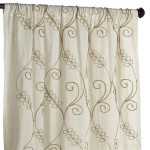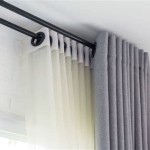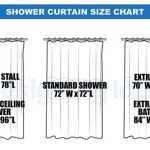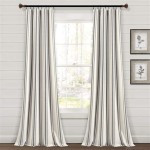What Is The Purpose of an Air Curtain?
An air curtain, also known as an air door, is a device used to create an invisible barrier of air over an opening, such as a doorway or window. This barrier separates two different environments while allowing for unimpeded pedestrian and vehicular traffic. Air curtains offer a multitude of benefits ranging from energy savings to pest control, making them a versatile solution for various applications across different industries.
Climate Control and Energy Efficiency
One of the primary purposes of an air curtain is to maintain climate control within a building. By creating a barrier of air, they prevent the exchange of air between two spaces with different temperatures. This is particularly crucial in environments where doors are frequently opened, such as retail stores, restaurants, and industrial facilities. During warmer months, air curtains prevent the ingress of hot air and humidity, while during colder months, they minimize the loss of heated air to the outside. This improved climate control translates directly into energy savings, as heating and cooling systems are not forced to work as hard to compensate for air exchange through open doorways.
The effectiveness of an air curtain in maintaining temperature separation depends on several factors, including the velocity and direction of the airflow, the size of the opening, and the temperature difference between the two environments. Properly installed and maintained air curtains can significantly reduce energy consumption, contributing to lower utility bills and a smaller carbon footprint.
Pest and Insect Control
Beyond climate control, air curtains provide an effective barrier against flying insects, dust, fumes, and other airborne contaminants. The constant stream of air disrupts the flight paths of insects, preventing them from entering the protected space. This is especially beneficial in food processing facilities, restaurants, hospitals, and other environments where hygiene and sanitation are paramount. By minimizing the presence of pests, air curtains contribute to maintaining a cleaner and healthier indoor environment.
The effectiveness of an air curtain as a pest control measure is influenced by several factors, including the velocity and direction of the airflow, the type of insects being targeted, and the surrounding environment. In some cases, air curtains may be used in conjunction with other pest control methods for optimal results.
Improving Employee Comfort and Safety
Air curtains contribute to a more comfortable and safer work environment in several ways. By preventing drafts and temperature fluctuations near doorways, they enhance the comfort of employees who work in these areas. This is particularly relevant for employees stationed near loading docks or frequently opened exterior doors.
In industrial settings, air curtains can also help prevent the entry of fumes, dust, and other airborne pollutants. This can be particularly important in environments where welding, grinding, or other processes generate airborne particles that can pose health risks to employees. By creating a barrier against these contaminants, air curtains help maintain a cleaner and safer breathing environment.
Furthermore, air curtains can improve visibility through doorways by preventing the formation of fog or condensation. This increased visibility can enhance safety, particularly in areas with high forklift or pedestrian traffic.
Maintaining Air Quality and Hygiene
In environments where maintaining air quality is critical, such as hospitals and cleanrooms, air curtains play a vital role in minimizing cross-contamination. They create a barrier that prevents the transfer of airborne particles, including dust, pollen, and microorganisms, between different areas. This helps to preserve the integrity of controlled environments and reduce the risk of infection or contamination.
Air curtains also contribute to overall hygiene by preventing the ingress of dust, dirt, and debris from outside. This is especially important in food processing facilities, where maintaining a clean and sanitary environment is essential for food safety. By preventing the entry of contaminants, air curtains help to reduce the risk of product contamination and maintain a higher level of hygiene.
Specialized Applications
While the most common applications of air curtains involve climate control and pest control, they are also utilized in various specialized applications. These include:
• Freezer and cold storage facilities: Air curtains help maintain consistent temperatures within cold storage areas, reducing energy loss and preventing the formation of ice buildup.
• Welding and grinding areas: Air curtains protect workers from fumes and sparks generated during these processes.
• Chemical processing plants: Air curtains help contain fumes and prevent them from spreading to other areas.
The specific design and configuration of an air curtain will vary depending on the application and the specific requirements of the environment.

What Is An Air Curtain And Its Purpose

6 Benefits Of Using Air Curtains In Buildings

Air Curtains What Is An Curtain 101 Berner

How Air Curtains Work

What Are The Purposes Of Air Curtains

Advantages And Benefits Of Air Curtains

Air Curtains What Is Curtain Doors Fan

Air Curtain 3 The Engineering Mindset

Shital Electric Co

Air Curtains Avoid Heat Loss At Doors








